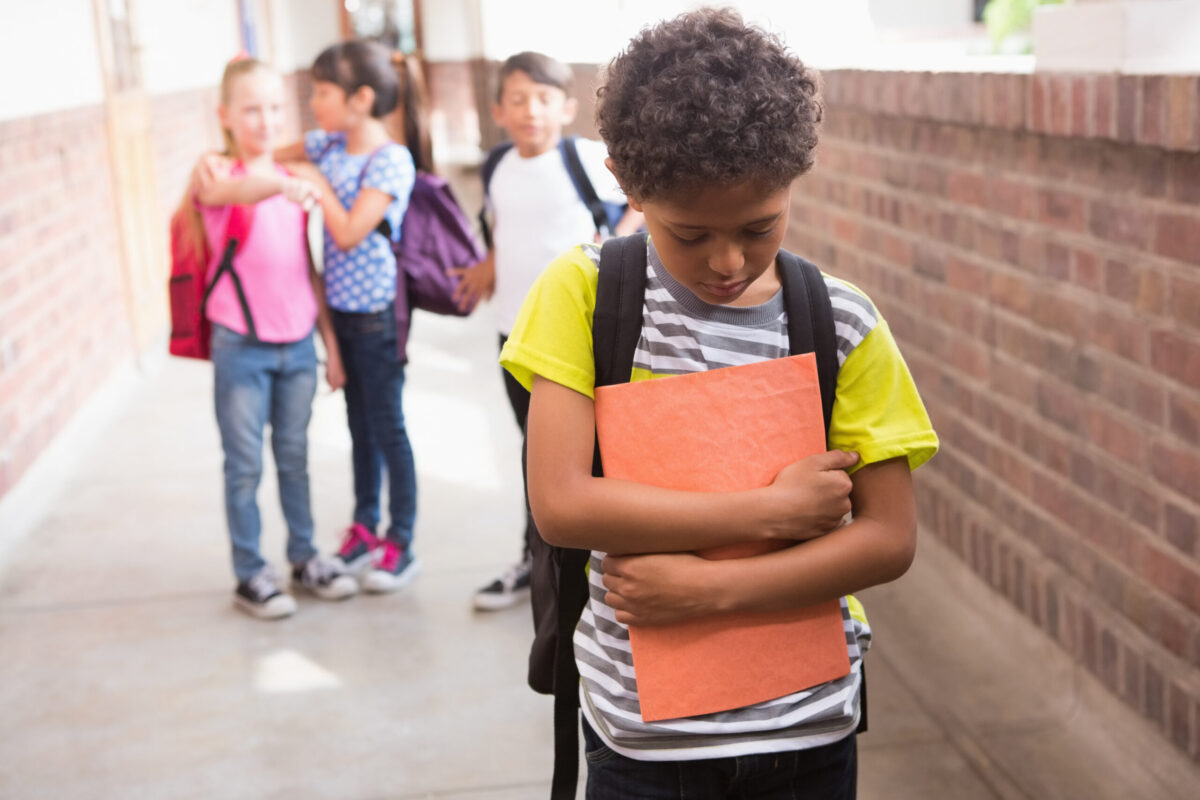Words are powerful, but kids don’t always have the right ones to express how they feel. While adults can work through their feelings and use words like anxious and depressed, most children haven’t learned what those terms mean yet. Instead, they might use different phrases (like the predictable “tummy ache” the day before school starts) and show a variety of behaviors to explain how they feel.
As a parent or teacher, you can learn to identify signs of anxiety in children. You can learn the difference between an anxiety tummy ache and one caused by too many cookies. Here are a few ways that kids express their distress that you might not pick up on.
1. Expressions of Anger or Defiance
When kids feel nervous or scared, they often act out in anger. Both aspects are part of the threat center of the brain, which is why many adults get these emotions confused as well. Anxiety triggers a fight-or-flight response, and anger could be the result of a child choosing the fight. The problem is that fighting is rarely the answer for many sources of anxiety.
If your child has experienced a recent change in their lives – or will have a change soon (like a new brother or sister) they may act out more in anger. These outbursts can occur in unexpected times and at seemingly unrelated things. Too often, adults focus on the isolated anger incident, not the source of where the rage comes from.
Additionally, some kids might exhibit defiance when they are stressed. This seems like anger but has its differences. Overly defiant kids will push back against basic requests as a way to take control of their lives. They might feel powerless about something they are going through, so they show force over the things they can control.
2. Dependence or Clinginess
When faced with fear, kids will turn to the people they trust the most for help. This is most often parents and close family members. Think about how many kids cry on the first day of school or the beginning drop-offs of daycare. They are uncertain about this new place and want someone nearby to help them.
If your child has become clingy in recent times, they may be experiencing high anxiety levels. This increased clinginess includes wanting to sleep in your bed at night, needing to stay in the same room as you, and not wanting to spend time with friends or other family members.
3. Trouble Focusing
If your child recently lost interest in their favorite activities or isn’t paying attention at school, considering evaluating their anxiety levels. When humans have higher than normal stress levels, all of the energy in their brains goes toward solving the problem and worrying about it. Suddenly, basic tasks seem impossible and even exhausting.
If this sounds familiar, think about the early days of the COVID-19 pandemic. Many adults had a hard time processing the lockdowns and the spread of the disease. Fear of catching the illness dominated everything from grocery shopping to walking in the park. Many adults reported trouble focusing and low energy levels.
Kids are little adults. Your child might ignore their favorite activities because their energy is centered around a key problem in their lives.
4. Changes in Sleep and Eating Patterns
Other symptoms of anxiety in children include changes in sleep and eating. Maybe your child refuses to eat anything but their favorite foods (clinging to something that makes them feel comfortable) or maybe they don’t want to eat anything at all. Your child might also have a hard time falling asleep and will wake up through the night.
While any symptoms of anxiety are worrying for parents, these can be particularly concerning. Changes in sleep and eating behaviors can affect kids physically as well as mentally. They may develop other behavioral challenges like irritability because of their lack of sleep and hunger.
5. Body Aches and Physical Symptoms
In both kids and adults, symptoms of anxiety show up in physical illness. This is where the “tummy ache” comes in when kids don’t feel good. Anxiety can feel like a pit in the stomach or a sour stomach, which is why kids think the problem is physical.
Kids might also complain of other physical symptoms when they are stressed or nervous. This includes complaining of arm pain, asking if they have a fever, or reporting low energy levels. They might also have to pee a lot – or at least act like they do.
While you should never downplay the physical symptoms of your kids, you may start to learn when they actually have a stomach ache and when the pain is caused by anxiety or stress.
6. Milestone Regressions
As kids age, they hit certain developmental milestones for growth. They start to walk for the first time and begin speaking in complete sentences. However, there are times when kids regress, or stop moving forward.
“Development regression is when your toddler or preschooler appears to be going backward in areas of their development,” Susan Taylor writes at Babyology. “It can be confusing for parents who don’t expect their little one to revert back to a previous stage, instead of progressing even further.”
For example, a potty-trained child might start to wet themselves or the bed. They might develop a reliance on a pacifier again. They might stop talking.
Taylor explains that you shouldn’t get mad at your kids for regressing. This may just be a temporary setback as all kids develop at different rates. However, there may be a source for these regressions. Your child might be regressing to win back your attention or to return to a more comfortable time.
7. Expressions of Sadness
While many kids don’t have the right words for anxiety or depression, some try to use what they know. Listen to what your kids have to say and how they express themselves. For example, they might use the basic sentence, “I’m sad,” to express that they are nervous about something. Words have power, especially when they come from young kids. Learn what they are trying to say and potentially teach them about their anxiety.
How to React When You Notice Anxiety in Children
Once you identify signs of anxiety in children, you can take steps to address the problem. One of the first things to do is to validate these emotions. Something that seems like a small issue to you might mean the world to them. Phrases like “it’s no big deal,” and “you’ll be fine,” downplay their emotions. At worst, you might further discourage your kids from expressing themselves in the future.
Instead, take time to listen to how they feel. You can help them fill in the gaps with new words and descriptions. Brainstorm a few solutions with them to address their concerns. For example, if a child is worried because a new sibling is on the way, you can create a dedicated “mom-and-me” time each day so they can feel seen.
If you want to explain anxiety to your kids, there are a few videos you can watch together. Anxiety Canada created a Fight Flight Freeze video for kids. The team at Flocabulary created a video and song called Managing Worry and Anxiety for Kids that you can also turn to.
Consider Seeking Counseling for Anxiety and Life Changes
If your child is going through a period of change, or if they just have high levels of anxiety, consider seeking counseling. Talking with a professional can help you as a parent with anxiety in children. Family counselors can also help kids better express themselves beyond the traditional tummy ache.
Family Resources offers free and affordable counseling for children and teens ages 6 to 17. We also invite families to participate if they have concerns. Learn more about our services and how we can help you.


